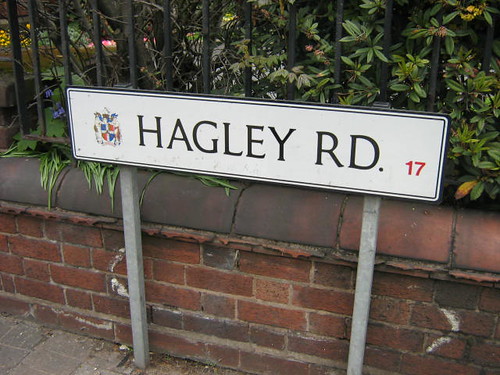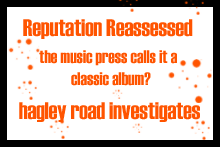 A look back at the tragedy that changed football forever.
A look back at the tragedy that changed football forever.I was around seven or eight when I decided football was to be my favourite sport. I'm pretty sure I was still totally unaware of the technicalities of the game, but around 1983 I started developing a fascination for football kits and, of course, the game itself.
By the end of the 1984-85 season, I remember looking forward to the European Cup (now known as the Champions League) final between Liverpool and Juventus that was to be played in Brussels.
I was really excited. To me, that was the best of all possible worlds, English football vs Italian football. What was back then the best British team taking on Italy's most prestigious representatives. I hated Juventus with a passion (my favourite Italian team was Roma, I never understood why), so I was truly hoping for Liverpool to mop the floor with Platini & C.
I was at home with my mum and we turned the telly on. The match wasn't on yet, but it didn't look like the usual build up to a final. There were live scenes on telly I'd never seen before, certainly not associated with a football match. The pitch was all messy, the whole thing was all over the place with people running about and lots of mounted police and what looked like officers in riot gear.
As minutes went by, we gathered from what the commentators were saying that something had not gone according to plan.
I can't remember much anymore after twenty-five years, but it felt like forever until the match started. I still recall the two capitains, Phil Neal and Gaetano Scirea, making a public announcement asking for supporters to calm down so that the game could go ahead. Everything was so surreal.
In the heat of the moment I don't think the scale of what later emerged was clear and, to this date, both sets of players deny they were aware of what was going on otherwise they wouldn't have played.
I don't know exactly at which stage the viewers were informed that many people had been killed prior to the game and that many more were injured, but I distinctly remember feeling really disturbed. I thought that football was just the most exciting sport, and that such a huge final could only be a big occasion to celebrate. My brain had not yet made the connection that football could also bring on primeval levels of violence and confrontation.
The telly showed the images of a collapsed concrete wall, crushed people and various scenes of despair and devastation. People, friends, dads with their kids had travelled all the way to be part of a historical event. Little did they know.
What happened proved a watershed moment in European football. UEFA finally vowed to clean up their act and never again allow matches to be organised under such shambolic circumstances. On their part, the British authorities finally decided to clamp down on the worst aspects of terrace culture. The rules of football policing changed forever and, credit when due, British stadiums are now way safer than in most European countries.
Yet, back to May 29 1985, several factors concurred to provoke the worst tragedy in the history of international football.
First. The mid-Eighties represented the peak of English hooliganism. By 1985 the behaviour of hardcore English fans had become intolerable, with trouble erupting both at domestic games and in Europe. With hindsight, Heysel and -though through different dynamics - Hillsborough were simply accidents waiting to happen.
Two. In selecting Heysel as the venue, UEFA got it seriously wrong. The stadium was falling to bits and was clearly unfit for purpose. Both the pitch and the structure were in desperate need of maintenance work, walls and chicken wire fences segregating different sectors were clearly decrepit and the crumbling stands so battered that bricks and other potential missiles were readily available.
Three. The ticket allocation had gone terribly wrong. Sure, the two sets of organised fans were placed at the two opposite ends, but the one bit right next to some of the most confrontational Liverpool fans was a so-called "neutral" section", the infamous section "Z", thinly policed and naively intended for Belgian people. Except that it was never going to work. Many non-organised Juventus fans (i.e. expats or families and people travelling individually) had managed to get hold of tickets for section Z from touts, meaning that they were only yards away from hardcore Liverpool supporters.
Four. Policing was absolutely inept. Officers and stewards were not present in sufficient numbers and thousands of people got into the ground with the stub still on their ticket.
Five. No precautions had been taken in spite of warnings that English supporters had sworn revenge after a number of Liverpool fans got assaulted in Rome the year before. There is evidence that some of the most unsavoury elements at Heysel were not only Liverpool supporters but also contingents from other English firms looking to get their own back against the Italians (even though supporters from Juventus and Roma absolutely detest one another).
 About an hour before kick-off, groups of Liverpool fans started charging towards section Z. This was typical of football disturbances of the time, when hooligans would literally try and take over "enemy territory".
About an hour before kick-off, groups of Liverpool fans started charging towards section Z. This was typical of football disturbances of the time, when hooligans would literally try and take over "enemy territory".With nowhere else to go, the people standing in section Z retreated towards the perimeter wall at the back with the result that a huge number of fans ended up being crushed. Many suffocated or got severely injured, but the worst happened when the wall collapsed under the sheer pressure of fleeing supporters and dozens were trampled underfoot.
In total 39 people died (32 Italians, 4 Belgians, 2 French and a man from Northern Ireland) and over 600 were injured.
Belgian police took half an hour to arrive, but just in time to stop the Juventus "ultras" from the opposite end of the stadium seeking revenge as news of the massacre began to circulate. Riots followed and the kick-off was delayed.
Controversy lingered on for years as both sets of players were criticised for starting the game in spite of the appalling circumstances. In particular, Juventus players took a lot of stick for publicly celebrating their 1-0 victory when they should have kept a more sombre approach.
Two days after the events, Prime Minister Margaret Thatcher didn't have to try very hard to talk UEFA into banning all English teams from European competitions. She returned immediately from an official visit abroad and declared: "There are no words, there are no possible justifications: the blame is entirely for England".
For five years (and seven for Liverpool), no English teams whatsoever were allowed to contest the European Cup, the Cup Winners' Cup and the UEFA Cup, with the result that the Premier League took years to recover both in terms of attracting top players and international reputation. From being the dominant force in European competitions in the late 1970s/early 1980s, English teams suffered some difficult years, having to wait until 1999 to lift a European Cup again.
When I look at photos of what happened on that night twenty-five years ago, I still get goosepimples. For all attempts at rationalising hooliganism and football violence, it remains the most disarmingly braindead manifestation of mankind.



3 comments:
With regards to the policing, I remember Nick Hornby saying the same thing in Fever Pitch, citing that the Belgian police (who clearly hadn't done much research into problems at games in England) were even taken by surprise that the violence kicked off before the game.
May 1985, what a bloody depressing time it must have been for football.
Why do you associate the Bradford fire with hooligans?
I just rectified it, Tom. Thanks for pointing that out.
Post a Comment